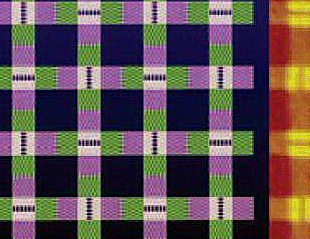DNA origami is a novel way to build addressable DNA surfaces with dimensions of about 100 x 100 nm2. Numerous investigators have attempted unsuccessfully to build two-dimensional arrays from origami tiles. The resulting tiles have rarely been more than a few origami tiles thick in the direction perpendicular to the helix axes.
Wenyan Liu, Hong Zhong, Risheng Wang, and Nadrian C. Seeman, New York University, NY, USA, have found that it is possible to construct 2D origami lattices if the DNA origami tile is organized so that the helix axes point in two perpendicular directions. These double-layer DNA-origami tile with two orthogonal domains underwent self-assembly into well-ordered 2D DNA arrays with edge dimensions of 2–3 μm. These lattices consist of two linked tiles and extend over several microns in each direction. This size is likely to be large enough to connect bottom-up methods of patterning with top-down approaches.

Structural DNA nanotechnology is one of the most powerful routes to the goal of organizing matter with the highest possible accuracy and control. Such control will lead to nanoelectronics, nanorobotics, programmable chemical synthesis, scaffolded crystals, and nanoscale systems responsive to their environments.
- Crystalline Two-Dimensional DNA Origami Arrays,
Wenyan Liu, Hong Zhong, Risheng Wang, Nadrian C. Seeman
Angew. Chem. Int. Ed. 2010.
DOI: 10.1002/anie.201005911




